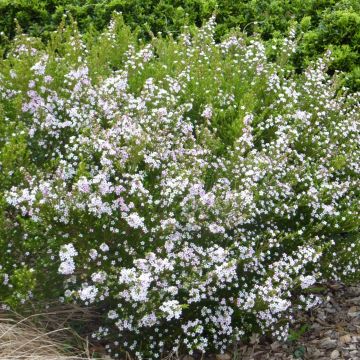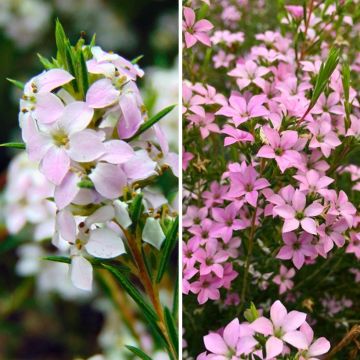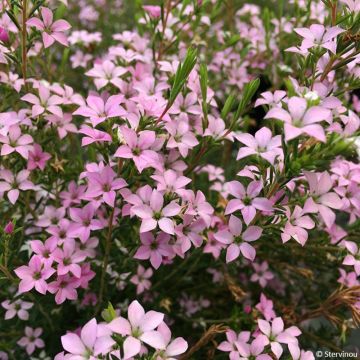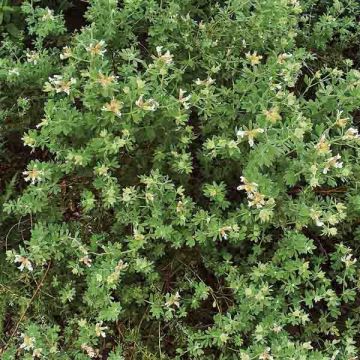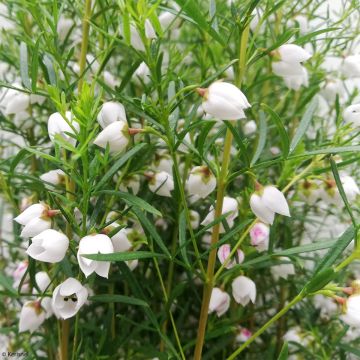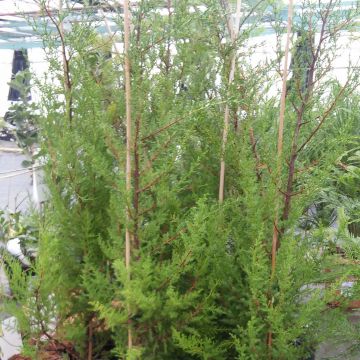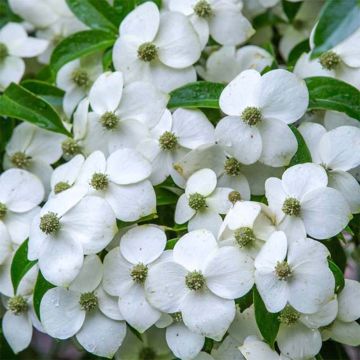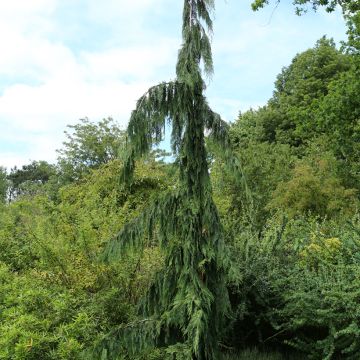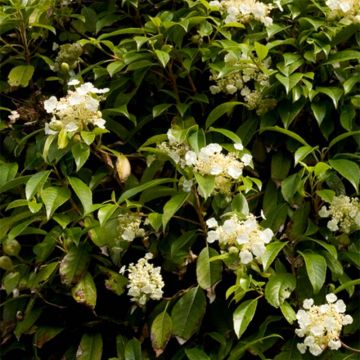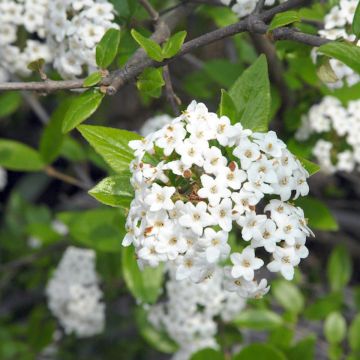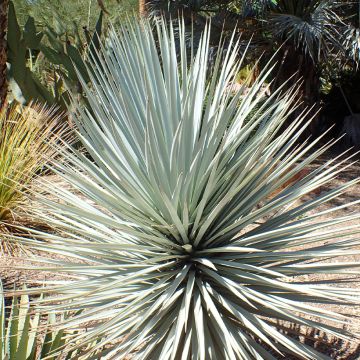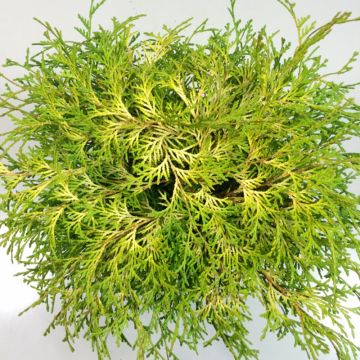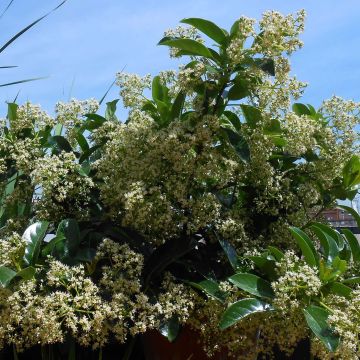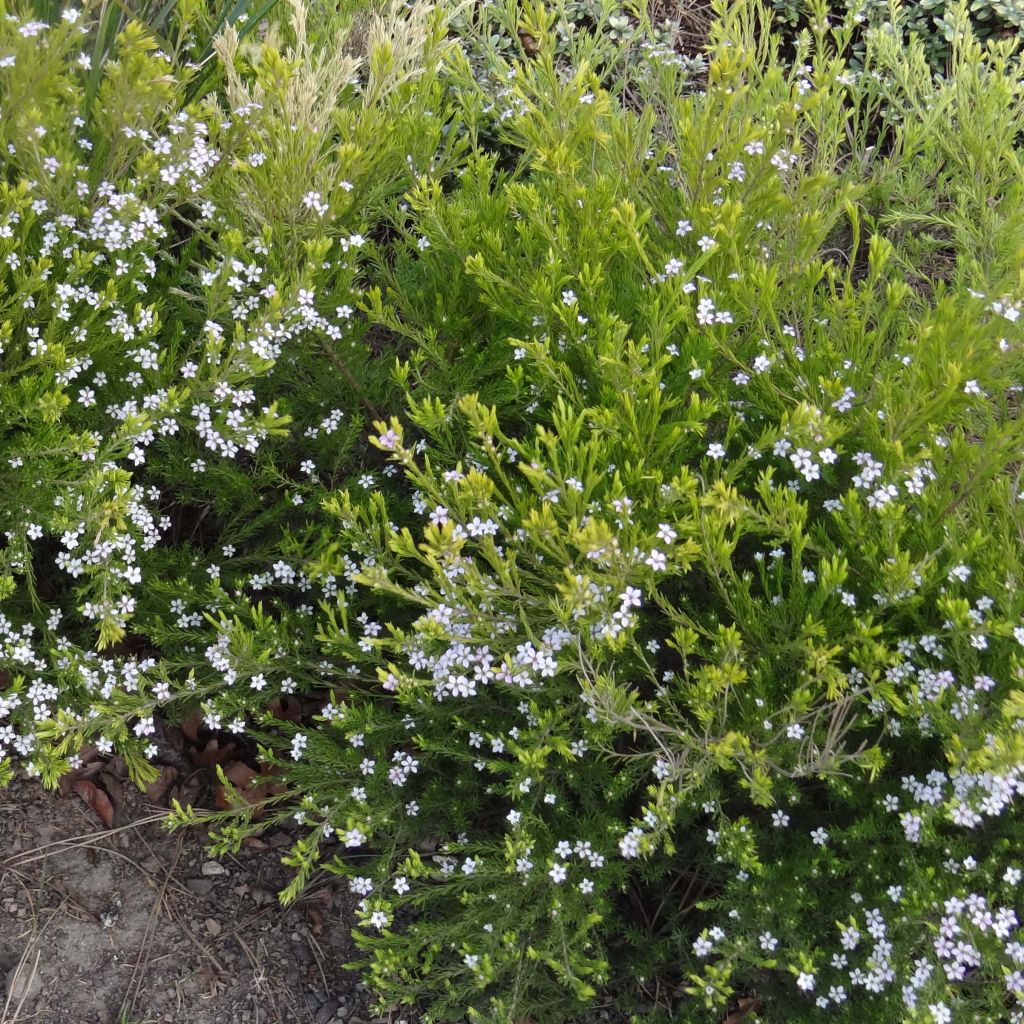

Diosma hirsuta Sunset Gold
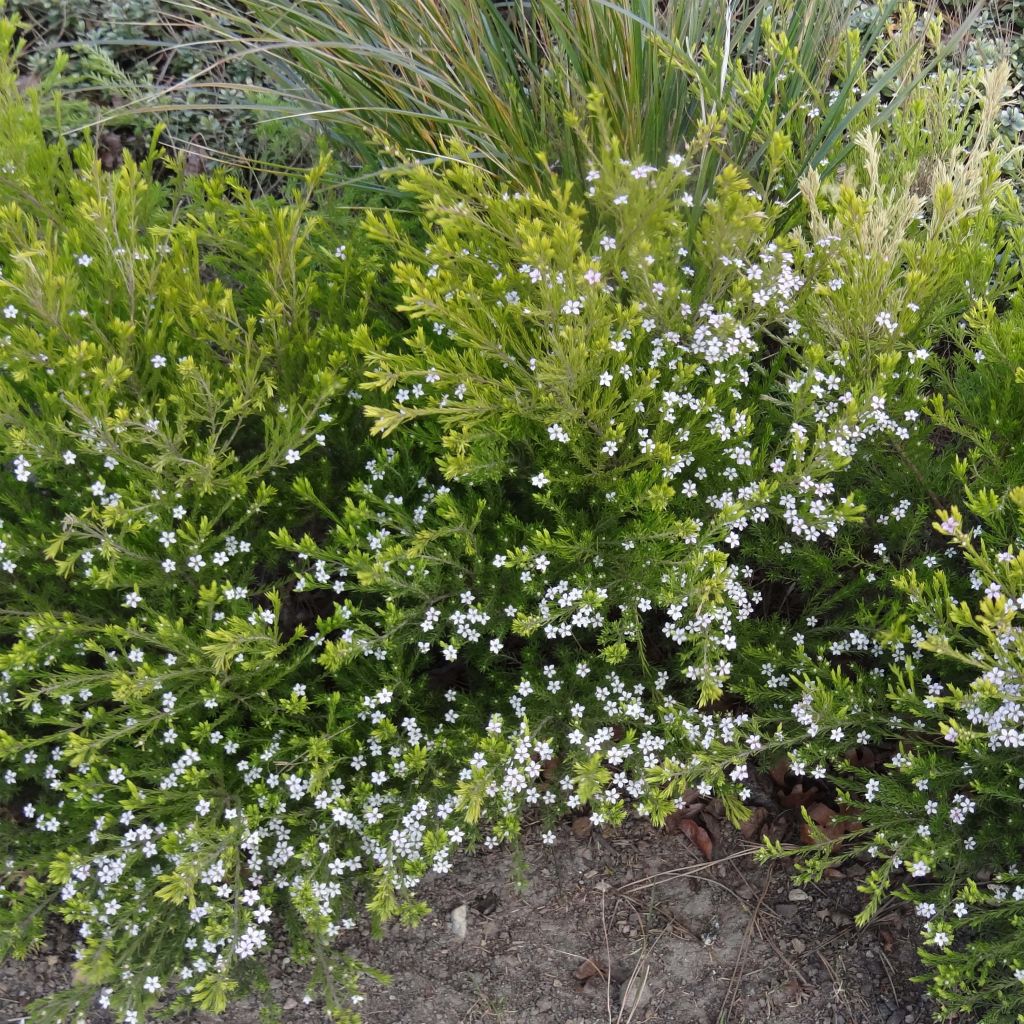

Diosma hirsuta Sunset Gold
Diosma hirsuta Sunset Gold
Diosma hirsuta Sunset Gold
Unfortunately, my 2 Diosmas only lasted 2 years (planted in a sunny spot in the ground). It's a pity because it's a beautiful bush.
Martine, 13/02/2023
This item cannot be shipped to the selected country
Delivery charge from €5.90
More information
Schedule delivery date,
and select date in basket
This plant carries a 24 months recovery warranty
More information
We guarantee the quality of our plants for a full growing cycle, and will replace at our expense any plant that fails to recover under normal climatic and planting conditions.
From €5.90 for pickup delivery and €6.90 for home delivery
Express home delivery from €8.90.

Does this plant fit my garden?
Set up your Plantfit profile →
Description
Diosma hirsuta Sunset Gold is a particularly compact variety of Diosma, with evergreen and feathery foliage of a very bright golden green, and an abundant and endless white flowering with just a hint of pink. Its foliage, as delicate as that of heather, releases a lemony scent when crushed. This delightful South African undershrub is well adapted to dry and poor soils, but not very hardy. It can only be grown outdoors in mild coastal climates. In most regions, it will be planted in a pot or container to decorate the terrace or balcony during the summer and will spend the winter sheltered from the cold.
Diosma hirsuta is a woody-based shrub plant from the Rutaceae family, just like lemon trees. It is native to the Cape region in South Africa, particularly the valleys and slopes of the Cederberg on sandy soil. It should not be confused with Coleonema, a very similar genus that produces true shrubs exceeding 1.50m (4 ft 11 in) in height. The diosma has given rise to some beautiful cultivars with flowers ranging from white to red.
'Sunset Gold' is a recent cultivar awarded by the Société Nationale d'Horticulture de France (SNHF) in St. Jean de Beauregard. It forms a miniature bush, or large cushion, with a more modest size than the 'Pink Fountain' cultivar. Its habit is very bushy, dense and slightly spreading. It reaches about 40 cm (15.7 in) in height and 50 cm (19.7 in) in width, with slow growth. Its flexible and brown stems bear golden foliage on young shoots, turning anise green over time. The very fine leaves, 7 to 10mm (0.3 to 0.4 in) long, are hairy and aromatic. They have no petioles and are arranged alternately and upright. The long flowering takes place from February-March to June-July, depending on the climate, lasting about 4 months. The star-shaped, fragrant and nectar-rich flowers do not exceed 7 mm (0.3 in) in diameter, but they are countless. Each one is composed of 5 petals and 5 stamens and is coloured a pale pinkish white. They often turn a delicate pink at the end of the season. They are either solitary or grouped in terminal clusters and are followed by the formation of green, aromatic fruits containing 5 small black seeds.
Diosma Sunset Gold is a very beautiful plant for poor and dry soils, useful for structuring the decor of a seaside garden, in a large rockery or a well-drained bed. It will only thrive in the ground in regions where winter temperatures do not drop below -5°C (23 °F). It can be associated with plants from scrub vegetation such as cistus, rosemary, lavender, thyme, or even teucrium in mild climates. It can also be planted in a small evergreen hedge, accompanied by a shrubby ceanothus ('Italian Skyes', 'Concha', 'Puget Blue', 'Skylark'...), Leptospermum, or even red-flowering callistemons (Callistemon citrinus 'Splendens') or other South African plants with exotic charm. In most regions, it will make a beautiful orangery or conservatory plant where it will form a fragrant and decorative group with an orange tree, a Boronia heterophylla or a mimosa.
Diosma hirsuta is also called the fisherman's plant, because fishermen used to rub their hands in its lemon-scented foliage to eliminate the smell of fish.
Report an error about the product description
Diosma hirsuta Sunset Gold in pictures
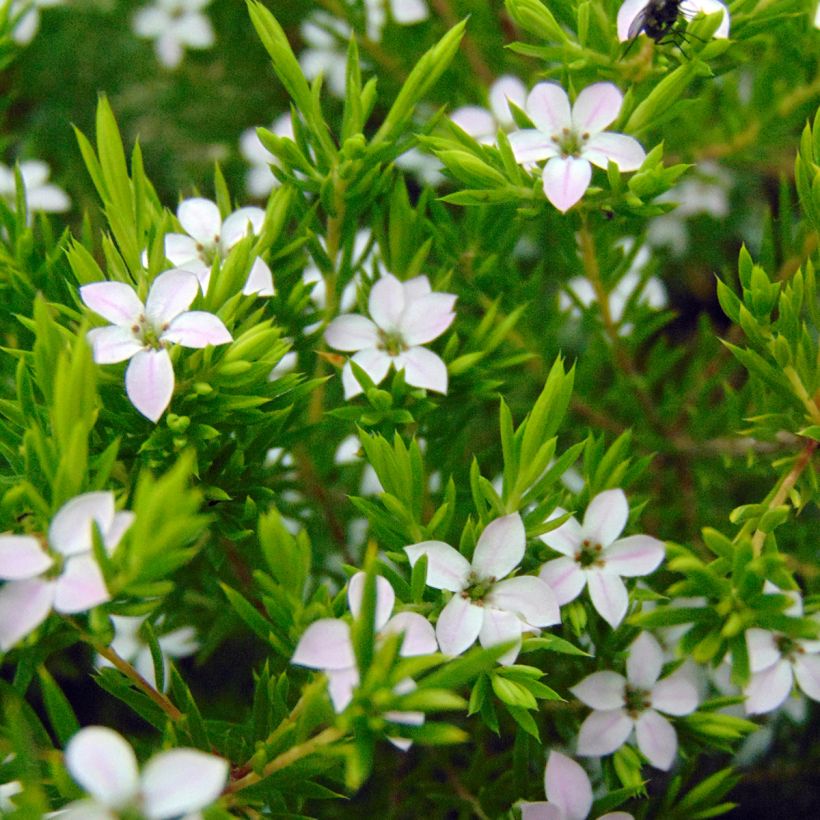

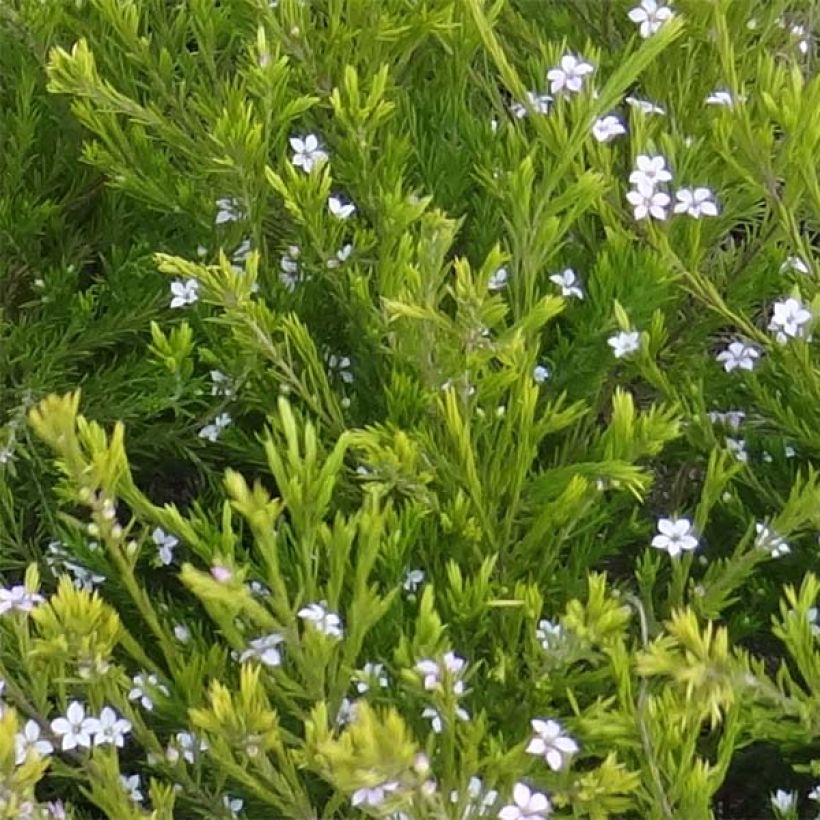

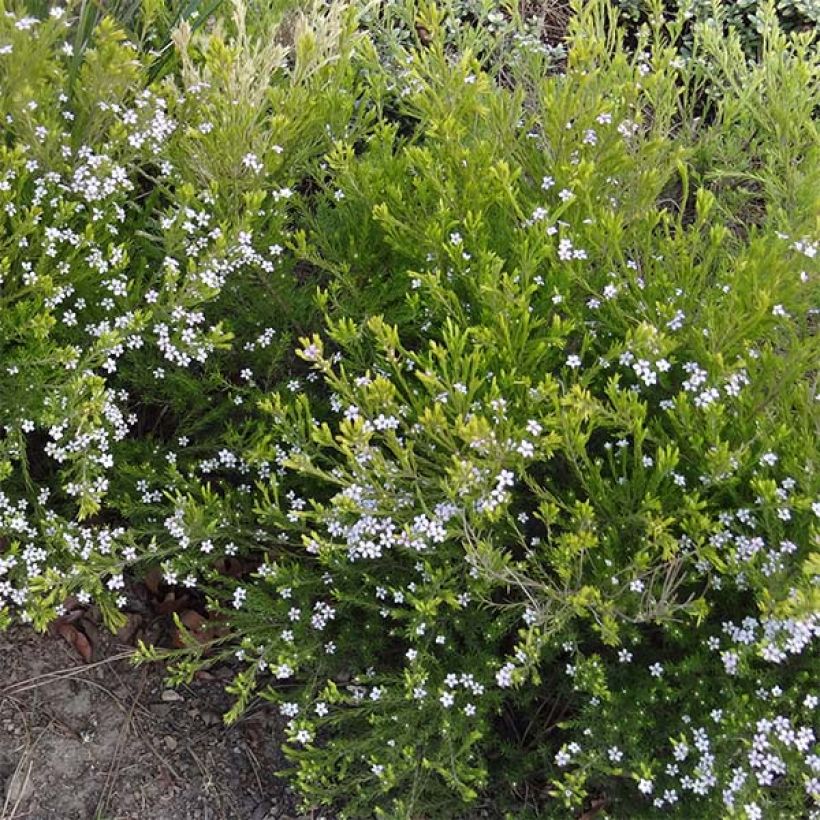

Plant habit
Flowering
Foliage
Botanical data
Diosma
hirsuta
Sunset Gold
Rutaceae
South Africa
Other Diosma
Planting and care
Diosma hirsuta can only be grown in open ground in mild coastal climates. It will thrive in light, well-drained soil, even sandy or rocky. A loose soil, humus-bearing, slightly rocky or sandy, slightly acidic, neutral or even slightly chalky will do. It tolerates sea spray well. Plant it after the last frost. It will flourish in the sun and likes to have warm roots. Under these conditions, it is hardy down to -5/-7°C (23/19.4 °F) and can live for many years. Surround it with fleece in cold regions and protect it from the cold as much as possible. Place it in the warmest corner of the garden, in full sun against a south-facing wall. Once well established, it will do without watering in summer. Away from the coast, it will be necessary to cultivate it in a large pot to be protected over winter, in a bright but unheated room. To shape it, you can lightly prune the stems after flowering to encourage the plant to branch out.
Container cultivation:
Ensure good drainage at the bottom of the pot. Use a light substrate, with added leaf mold and coarse sand, and add a little slow-release fertilizer at the end of winter. Do not bury the collar of the plant. Water regularly in summer, allowing the soil to dry out between waterings.
Planting period
Intended location
Care
-
, onOrder confirmed
Reply from on Promesse de fleurs
Evergreen shrubs
Haven't found what you were looking for?
Hardiness is the lowest winter temperature a plant can endure without suffering serious damage or even dying. However, hardiness is affected by location (a sheltered area, such as a patio), protection (winter cover) and soil type (hardiness is improved by well-drained soil).

Photo Sharing Terms & Conditions
In order to encourage gardeners to interact and share their experiences, Promesse de fleurs offers various media enabling content to be uploaded onto its Site - in particular via the ‘Photo sharing’ module.
The User agrees to refrain from:
- Posting any content that is illegal, prejudicial, insulting, racist, inciteful to hatred, revisionist, contrary to public decency, that infringes on privacy or on the privacy rights of third parties, in particular the publicity rights of persons and goods, intellectual property rights, or the right to privacy.
- Submitting content on behalf of a third party;
- Impersonate the identity of a third party and/or publish any personal information about a third party;
In general, the User undertakes to refrain from any unethical behaviour.
All Content (in particular text, comments, files, images, photos, videos, creative works, etc.), which may be subject to property or intellectual property rights, image or other private rights, shall remain the property of the User, subject to the limited rights granted by the terms of the licence granted by Promesse de fleurs as stated below. Users are at liberty to publish or not to publish such Content on the Site, notably via the ‘Photo Sharing’ facility, and accept that this Content shall be made public and freely accessible, notably on the Internet.
Users further acknowledge, undertake to have ,and guarantee that they hold all necessary rights and permissions to publish such material on the Site, in particular with regard to the legislation in force pertaining to any privacy, property, intellectual property, image, or contractual rights, or rights of any other nature. By publishing such Content on the Site, Users acknowledge accepting full liability as publishers of the Content within the meaning of the law, and grant Promesse de fleurs, free of charge, an inclusive, worldwide licence for the said Content for the entire duration of its publication, including all reproduction, representation, up/downloading, displaying, performing, transmission, and storage rights.
Users also grant permission for their name to be linked to the Content and accept that this link may not always be made available.
By engaging in posting material, Users consent to their Content becoming automatically accessible on the Internet, in particular on other sites and/or blogs and/or web pages of the Promesse de fleurs site, including in particular social pages and the Promesse de fleurs catalogue.
Users may secure the removal of entrusted content free of charge by issuing a simple request via our contact form.
The flowering period indicated on our website applies to countries and regions located in USDA zone 8 (France, the United Kingdom, Ireland, the Netherlands, etc.)
It will vary according to where you live:
- In zones 9 to 10 (Italy, Spain, Greece, etc.), flowering will occur about 2 to 4 weeks earlier.
- In zones 6 to 7 (Germany, Poland, Slovenia, and lower mountainous regions), flowering will be delayed by 2 to 3 weeks.
- In zone 5 (Central Europe, Scandinavia), blooming will be delayed by 3 to 5 weeks.
In temperate climates, pruning of spring-flowering shrubs (forsythia, spireas, etc.) should be done just after flowering.
Pruning of summer-flowering shrubs (Indian Lilac, Perovskia, etc.) can be done in winter or spring.
In cold regions as well as with frost-sensitive plants, avoid pruning too early when severe frosts may still occur.
The planting period indicated on our website applies to countries and regions located in USDA zone 8 (France, United Kingdom, Ireland, Netherlands).
It will vary according to where you live:
- In Mediterranean zones (Marseille, Madrid, Milan, etc.), autumn and winter are the best planting periods.
- In continental zones (Strasbourg, Munich, Vienna, etc.), delay planting by 2 to 3 weeks in spring and bring it forward by 2 to 4 weeks in autumn.
- In mountainous regions (the Alps, Pyrenees, Carpathians, etc.), it is best to plant in late spring (May-June) or late summer (August-September).
The harvesting period indicated on our website applies to countries and regions in USDA zone 8 (France, England, Ireland, the Netherlands).
In colder areas (Scandinavia, Poland, Austria...) fruit and vegetable harvests are likely to be delayed by 3-4 weeks.
In warmer areas (Italy, Spain, Greece, etc.), harvesting will probably take place earlier, depending on weather conditions.
The sowing periods indicated on our website apply to countries and regions within USDA Zone 8 (France, UK, Ireland, Netherlands).
In colder areas (Scandinavia, Poland, Austria...), delay any outdoor sowing by 3-4 weeks, or sow under glass.
In warmer climes (Italy, Spain, Greece, etc.), bring outdoor sowing forward by a few weeks.

































